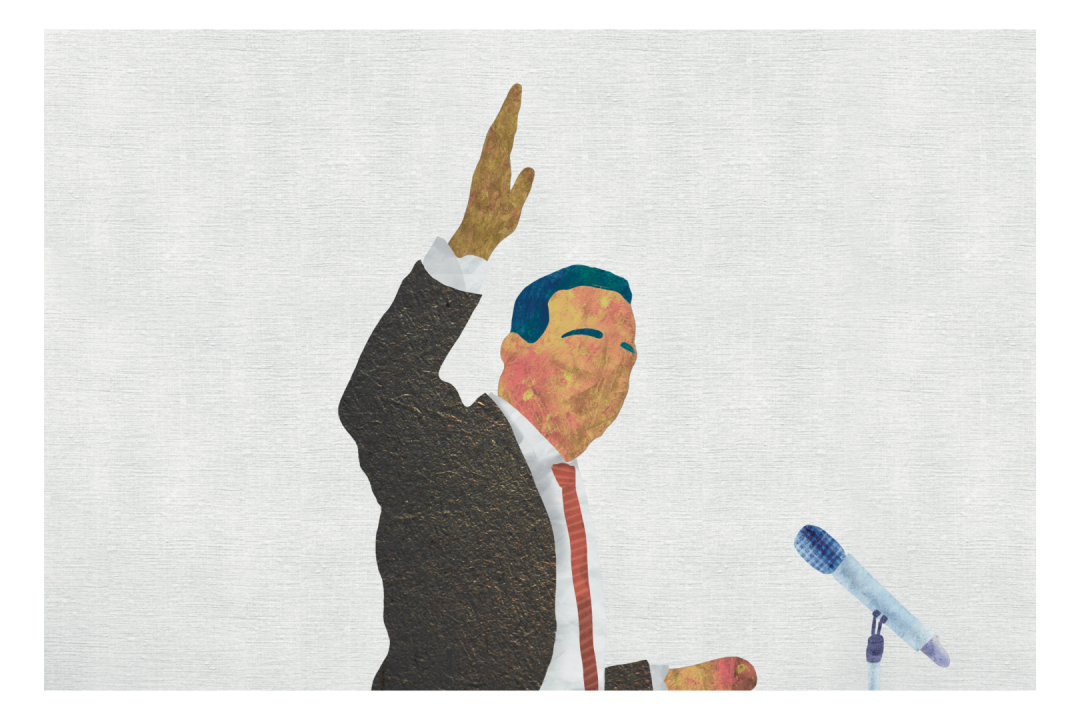The Environmental Impact of WWII
By: Midya Hassan
World War II left a permanent effect on many aspects of society. While the battle is usually discussed in terms of its political and social consequences, the environmental consequences of the war are equally important. World War II's environmental consequences include ozone layer damage, forest damage, the discovery and deployment of atomic bombs, nuclear proliferation, and Albert Einstein's participation in the creation of these weapons. We may obtain a greater understanding of the long-term effects on our planet and the significance of responsible technology and environmental preservation by researching these important periods of history.
Ozone Layer
During WWII, the extensive use of chlorofluorocarbons (CFCs) in refrigerants, aerosol propellants, and industrial processes unintentionally led to the exhaustion of the ozone layer. While the immediate attention was on the war effort, its lasting effects became obvious over the course of the decades that followed. The decrease in the ozone layer allowed harmful ultraviolet (UV) radiation to penetrate the Earth's surface, threatening human health, ecosystems, and productivity in agriculture. Although the widespread use of CFCs during the war years was not intended to cause damage to the environment, it had unexpected effects that have had long-term impacts on the global environment.
Forest Damage
During World War II, extensive tracts of forest in Russia were strongly deforested, becoming an area of conflict where both Axis Communications and Allied forces used important military operations, weapons of mass destruction, and explosive techniques. The consequences of this battle were far-reaching, resulting in significant devastation and loss of biodiversity inside Russian forests, as well as long-term environmental consequences. According to estimates, the battle damaged more wood than usual in Russia. Because of the scale of the destruction, massive deforestation occurred, leaving desolate landscapes where formerly colorful ecosystems had existed. The loss of forests has a huge impact on biodiversity, displacing or killing numerous plant and mammal species. This loss of biodiversity not only harmed the delicate balance of ecosystems but also weakened the natural environment's general survival capability.
The devastation of trees during WWII had enormous economic effects on local people. Forests have an important role in supporting livelihoods and supplying vital resources to human populations. The war's impact on these rich ecosystems disrupted many people's traditional ways of life, as they relied on forests for survival, shelter, and economic activities such as harvesting and collecting forest products that weren't timber.
The effects of the conflict on Russian woods were not restricted to immediate destruction. The devastation of ecosystems, as well as the resulting ecological imbalances, has long-term consequences. As the wounds of battle persisted, forest restoration in the damaged regions was slow and difficult. Forest loss additionally impacted water cycles, soil stability, and nutrient cycling, increasing ecological disturbances and delaying natural environment recovery.
Furthermore, the loss of forests during WWII is an alarming warning of the environmental toll that armed conflict may exact The potentially harmful environmental effects of armed wars, with a particular focus on the destruction of forests during World War II as a key example. Forests sometimes suffer as a result of several circumstances during times of conflict. Intense military operations, such as bombing and attacks, have the potential to destroy huge quantities of woodland. Explosives, chemicals, and other weapons are capable of causing major environmental damage, including the destruction of trees, greenery, and ecosystems that support wildlife. Furthermore, military operations such as removing green areas for military installations, constructing roads, or obtaining resources such as wood for various objectives might involve the implementation of the destruction of forests strategies. It emphasizes the interdependence between combat and the environment and the devastating impact such wars may have on ecosystems and the populations that rely on them.
Following the war, efforts were made throughout Russia to repair and restore the destroyed woods. Reforestation projects and conservation efforts attempted to replace damaged ecosystems while also assisting local populations. These efforts aimed at reducing the war's long-term impacts and promoting sustainable forest management methods, allowing nature to heal and recover over time.
Use of Nukes
The unbelievable discovery and subsequent use of nuclear weapons was one of the most significant and enduring legacies to emerge from the horrific events of World War II. This game-changing breakthrough, credited to the Manhattan Project led by the legendary physicist Albert Einstein, established a new age in warfare and forever changed the course of human history. The devastating bombs dropped on Hiroshima and Nagasaki, carried out with these fearsome weapons, remain as indelible landmarks that echo throughout history, serving as a grim memorial to the unimaginable destructive force unleashed on innocent civilians.
During World War II, the development of nuclear weapons marked a fundamental shift in the nature of warfare, as the world witnessed the horrifying reality that entire cities could be obliterated in a single, devastating strike. The immense destruction and unimaginable loss of human life inflicted upon Hiroshima and Nagasaki left an indelible mark on the collective consciousness of humanity, forever etching the names of those cities into the annals of sorrow and despair. Beautiful urban landscapes were transformed into vast wastelands of devastation and ashes within seconds, permanently altering the lives of those who survived and haunting the thoughts of those who perished.
The development and use of nuclear weapons during World War II left an indelible impact on history, forever altering the course of human civilization. The bombs dropped on Hiroshima and Nagasaki caused tremendous devastation and loss of life, alerting the world to the long-term hazards of nuclear radiation and pollution. These incidents served as terrifying reminders of the tremendous power of nuclear weapons, shedding light on the potential for extensive environmental destruction. The legacy of the atomic bombs from World War II serves as an important reminder of the ethical and environmental dilemmas associated with technological and scientific progress, urging us to proceed with unwavering caution and wisdom.
Nuclear Proliferation
Following the end of World War II, the world witnessed a period of intense competition and rivalry between nations, particularly in terms of nuclear weapons development. The atomic bombings of Hiroshima and Nagasaki marked the dawn of the nuclear age and ignited a race among global powers to acquire and expand their own nuclear powers. The arms race that ensued had profound environmental implications.
The proliferation of nuclear weapons brought with it numerous environmental issues and risks. The testing of nuclear weapons, both above and below ground, resulted in the release of radioactive materials into the atmosphere, soil, and water. These radioactive pollutants had far-reaching consequences for ecosystems, causing genetic mutations in plants and animals, contaminating food chains, and posing health risks to human populations.
Moreover, the production and disposal of nuclear weapons generated significant amounts of toxic and radioactive waste, presenting challenges for safe storage and management. The potential for accidental detonation, nuclear accidents, and the deliberate use of nuclear weapons posed existential threats to the environment and humanity as a whole. The environmental concerns associated with nuclear proliferation led to global initiatives and treaties aimed at curbing the spread of nuclear weapons, promoting disarmament, and safeguarding the environment. Efforts such as the Treaty on the Non-Proliferation of Nuclear Weapons (NPT), the Comprehensive Nuclear-Test-Ban Treaty (CTBT), and the Paris Agreement on climate change reflect the international community's recognition of the need to address the environmental and security risks posed by nuclear weapons.
Albert Einstein's Role
Albert Einstein, one of the most brilliant scientific minds of the 20th century, played a significant role in the development of atomic bombs during World War II. While his contributions to science are widely celebrated, Einstein himself expressed deep concerns about the ethical implications and destructive power of nuclear weapons.
Einstein was well aware of the potential consequences of nuclear weapons, predicting the downfall of civilization if these destructive forces were not handled responsibly. He emphasized the need for international cooperation, disarmament, and the prevention of further nuclear proliferation. Einstein's advocacy for peace and his vocal stance against war demonstrated his commitment to protecting both humanity and the environment from the devastating consequences of warfare.
It is important to note that Einstein's involvement in the Manhattan Project was primarily limited to writing a letter to President Franklin D. Roosevelt, urging the United States to initiate nuclear research for defense purposes. However, he later regretted his role in the development of atomic bombs, recognizing the immense destructive potential and environmental hazards they posed.
Einstein's profound understanding of the relationship between science, technology, and society serves as a powerful reminder of the responsibility scientists and policymakers bear in ensuring the ethical and responsible use of scientific advancements. His legacy continues to inspire debates on the delicate balance between scientific progress, national security, and environmental preservation.
World War II had significant consequences for the environment that continue to have an influence on our world today. Through the massive use of chlorofluorocarbons (CFCs), the conflict unknowingly damaged the ozone layer, resulting in long-term effects on human health and the environment. Forests that became battlegrounds throughout the conflict saw widespread deforestation and biodiversity damage, impacting the local economy and changing natural ecosystems. Nuclear weapons usage, as shown by the Hiroshima and Nagasaki bombs, had severe environmental and long-term consequences, underlining the risks and ethical quandaries connected with such dangerous technology. Nuclear proliferation and an arms race dominated by the aftermath of the war led to environmental concerns and the necessity of global grants to address the potential dangers of nuclear weapons. Albert Einstein's role in the creation of atomic weapons highlighted scientists' and politicians' need to address the ethical implications and environmental effects of technological advances. World War II's environmental legacy serves as a reminder of the significance of responsible technology, environmental preservation, and global collaboration in securing a sustainable future.




